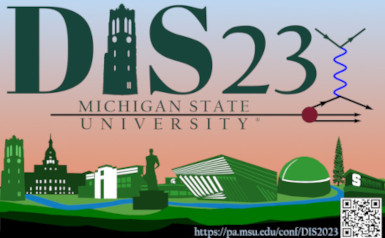Speaker
Description
In the 1970's, Fermilab discovered that $\Lambda$ hyperons are polarized in collisions of unpolarized protons on beryllium. This discovery initiated a 50 year long series of measurements which aimed at solving this $\Lambda$ hyperon polarization puzzle. Although this puzzle remains to be an open question, the self-polarizing feature of $\Lambda$ hyperon has been providing an important experimental handle on measuring other polarization phenomena in nonperturbative Quantum Chromodynamics, e.g., the global $\Lambda$ hyperon polarization in heavy-ion collisions, spin transfer in polarized p$+$p collisions, etc. Hereby we present a status on the first measurement of spin correlation between two $\Lambda$ hyperons, including $\Lambda\Lambda$, $\bar{\Lambda}\bar{\Lambda}$, and $\Lambda\bar{\Lambda}$, in p$+$p collisions at $\sqrt{s}=200$ GeV and $\sqrt{s}=510$ GeV using the STAR detector. The spin correlation of two $\Lambda$ hyperons is measured with respect to each other on an event-by-event basis, contrary to other established $\Lambda$ hyperon polarization measurements. This new observable can provide further insights to the origin of the $\Lambda$ hyperon polarization, e.g., the interplay between the initial-state parton spin and the final-state polarising fragmentation. In addition, the spin correlation between a $\Lambda\bar{\Lambda}$ pair can provide a first Clauser-Horne-Shimony-Holt (CHSH) inequality test for spin entanglement in high-energy hadron collider experiment. Implication of the CHSH inequality test in the context of high-energy hadron collisions will be discussed.
| Submitted on behalf of a Collaboration? | Yes |
|---|
